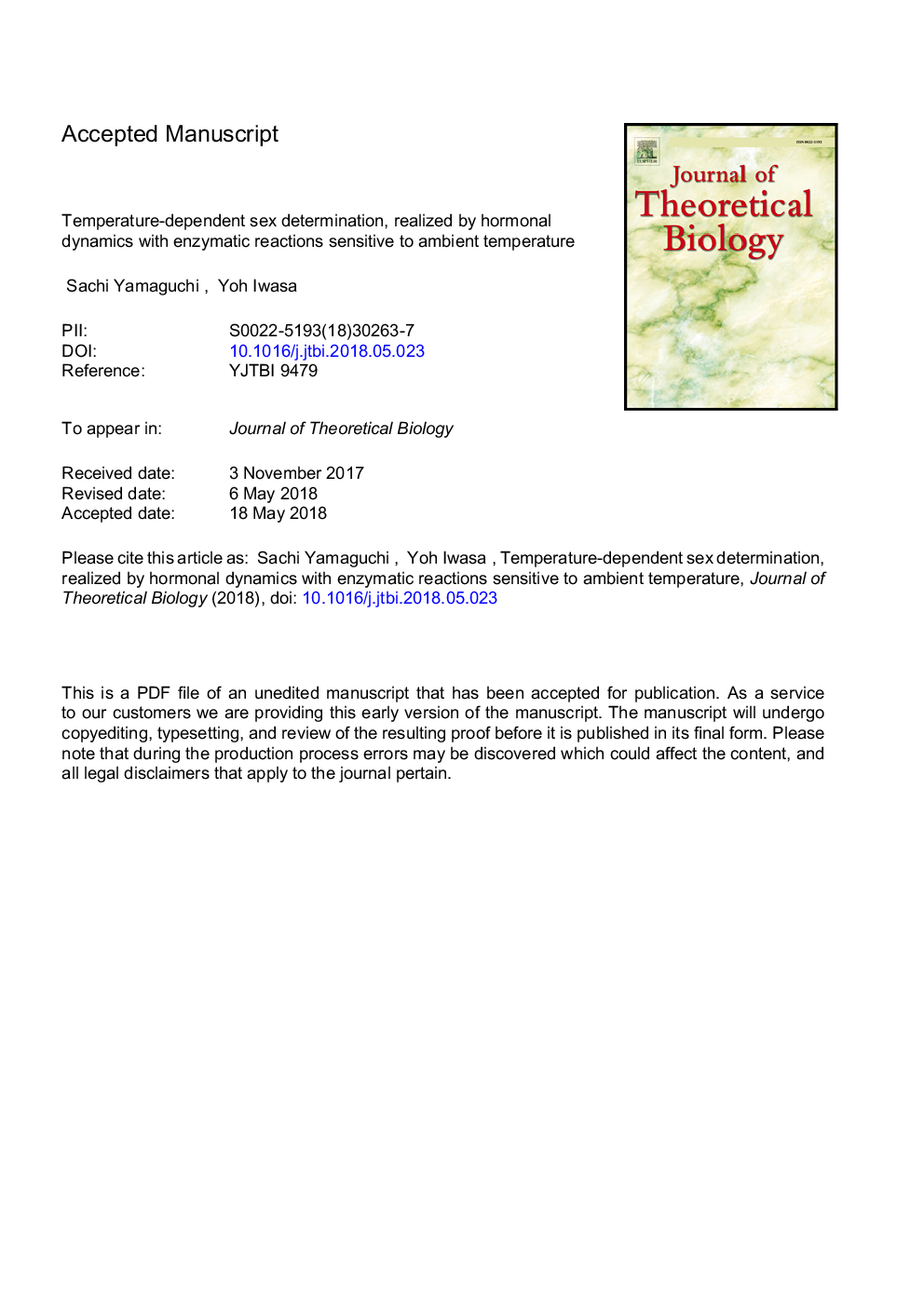| کد مقاله | کد نشریه | سال انتشار | مقاله انگلیسی | نسخه تمام متن |
|---|---|---|---|---|
| 8876617 | 1623757 | 2018 | 42 صفحه PDF | دانلود رایگان |
عنوان انگلیسی مقاله ISI
Temperature-dependent sex determination, realized by hormonal dynamics with enzymatic reactions sensitive to ambient temperature
ترجمه فارسی عنوان
تعیین جنسیت وابسته به دما، متوجه پویایی هورمونی با واکنش های آنزیمی حساس به دمای محیط
دانلود مقاله + سفارش ترجمه
دانلود مقاله ISI انگلیسی
رایگان برای ایرانیان
کلمات کلیدی
موضوعات مرتبط
علوم زیستی و بیوفناوری
علوم کشاورزی و بیولوژیک
علوم کشاورزی و بیولوژیک (عمومی)
چکیده انگلیسی
Temperature-dependent sex determination (TSD) is adopted by many animal taxa, including reptiles and fishes. In some species, the eggs develop into females under a low hatching temperature, whereas they will develop into males under a high hatching temperature (called the FM-pattern). In other species, the eggs develop into males (or females) under a low (or high) hatching temperature (MF-pattern). Still, in other species, the eggs develop into females, males, or females, respectively, when under a low, intermediate, or high hatching temperature (FMF-pattern). In this paper, we study a mechanism for realizing TSD. Specifically, we explore a hypothesis that the temperature dependence of enzymatic reaction rates causes a clear switching of sex hormone levels with gradual change of temperature. Herein, we analyze a simple hormonal-dynamics with temperature-sensitive rates of enzymatic reactions included in the sex-determining gene-protein regulatory network. We first examined the cases in which the enzymatic reactions followed Arrhenius equation. The MF-pattern appeared when the rates of aromatase production and/or estradiol production depend more strongly on temperature than do the rates of their decay. By contrast, the FM-pattern appeared when the temperature dependence is stronger for the decay rates of aromatase and/or estradiol than their production rates. However, the FMF-pattern appeared only when some enzymatic reactions follow Berthelot-Hood equation, which exhibits a stronger temperature dependence under higher temperatures than Arrhenius equation. We discuss the possible mechanisms for TSD of FMF-pattern, including alternative splicing and post-translational modification.
ناشر
Database: Elsevier - ScienceDirect (ساینس دایرکت)
Journal: Journal of Theoretical Biology - Volume 453, 14 September 2018, Pages 146-155
Journal: Journal of Theoretical Biology - Volume 453, 14 September 2018, Pages 146-155
نویسندگان
Sachi Yamaguchi, Yoh Iwasa,
